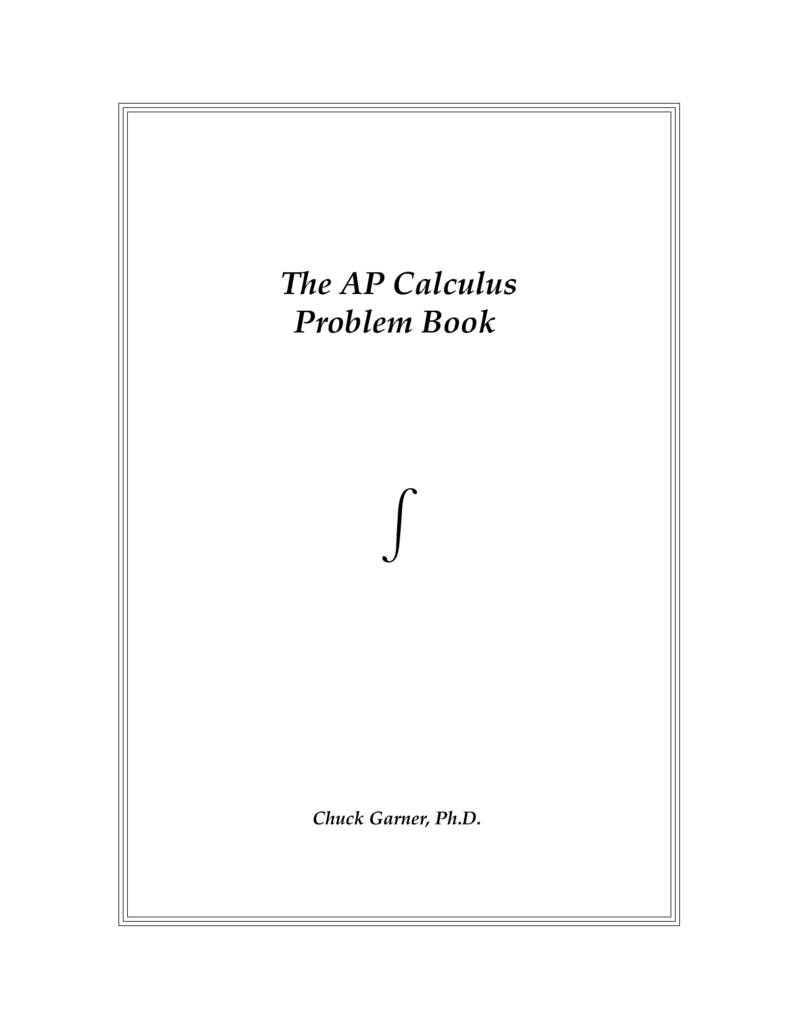3.7 Continuity And Differentiablityap Calculus
- 3.7 Continuity And Differentiablityap Calculus Algebra
- 3.7 Continuity And Differentiablityap Calculus Solver
- 3.7 Continuity And Differentiablityap Calculus 14th Edition
Continuity and Differentiability Differentiability implies continuity (but not necessarily vice versa) If a function is differentiable at a point (at every point on an interval), then it is continuous at that point (on that interval). The converse is not always true: continuous functions may not be differentiable. Math AP®︎/College Calculus AB Differentiation: definition and basic derivative rules Connecting differentiability and continuity: determining when derivatives do and do not exist Differentiability and continuity. Worksheet 3:7 Continuity and Limits Section 1Limits Limits were mentioned without very much explanation in the previous worksheet. We will now take a closer look at limits and, in particular, the limits of functions. Limits are very important in maths, but more specically in calculus.
Definition A function f is said to be differentiable at a if thelimit of the difference quotient exists.
That is, if exists. The applet and explorations on this page look at what this means.
| See About the calculus applets for operating instructions. |

3.7 Continuity And Differentiablityap Calculus Algebra
1. A jump discontinuity
The applet initially shows a line with a jump discontinuity. What is the derivative of this function for
2. A displaced point

Select the second example from the drop-down menu. This shows a line with a point displaced (it's in the same place as the red dot). Hp deskjet f2410 driver download windows xpprogramngo. What is the derivative of this function for x = 1? Slowly drag the green dot towards the red dot. What happens to the slope of the green secant line? Now move the green dot to the left of the red dot and slowly drag it back. What happens to the slope? In this case, neither the left-hand derivative or the right-hand derivative exist (both go to infinity), so the function is not differentiable at x = 1.
3. A missing point
Select the third example, which shows a line with a point missing. What is the derivative of this function for x = 1? In this case, the function isn't defined at x = 1, so in a sense it isn't 'fair' to ask whether the function is differentiable there. A function is not differentiable for input values that are not in its domain.
4. A hyperbola
Select the fourth example, showing a hyperbola with a vertical asymptote. What is the derivative of this function for x = 1? Like the previous example, the function isn't defined at x = 1, so the function is not differentiable there. These examples illustrate that a function is not differentiable where it does not exist or where it is discontinuous.
5. Absolute value
Select the fifth example, showing the absolute value function (shifted up and to the right for clarity). What is the derivative at x = 1? This time, the function does exist for x = 1 and it is continuous there. Drag the green dot towards the red dot from the right and then from the left. What happens in each case to the slope of the green secant line? In this example, both the left-hand and right-hand derivatives exist, but they are different. When this happens, the general derivative does not exist (remember, a general limit exists only if the left-hand limit and the right-hand limit both exist and are the same), so the function is not differentiable at x = 1. Corners like this are places where the slope changes abruptly and cause the left-hand and right-hand derivatives to be different.
6. Power function with cusp
Select the sixth example. This shows a power function with a cusp, a very pointy piece of a graph. It is continuous at x = 0. Is there a derivative at x = 0? Drag the green dot from the left and from the right towards the red dot and notice the slope. Like corners, cusps can cause the slope to change abruptly, hence the function is not differentiable at x = 0. Sports heads football unblocked.

7. Cube root

Select the seventh example, showing the cube root function. It, too, is continuous at x = 0, but is it differentiable there? Drag the green dot towards the red. It looks like the slope gets pretty big near the red dot. You can get closer by typing an x value in the input box, like 0.00001. In fact, the cube root function has a vertical tangent at x = 0, which means that the limit in the derivative is undefined at this point. Hence this function is not differentiable at x = 0. More generally, functions are not differentiable where they have vertical tangents.

3.7 Continuity And Differentiablityap Calculus Solver
Other differentiation topics
3.7 Continuity And Differentiablityap Calculus 14th Edition
All rights reserved
